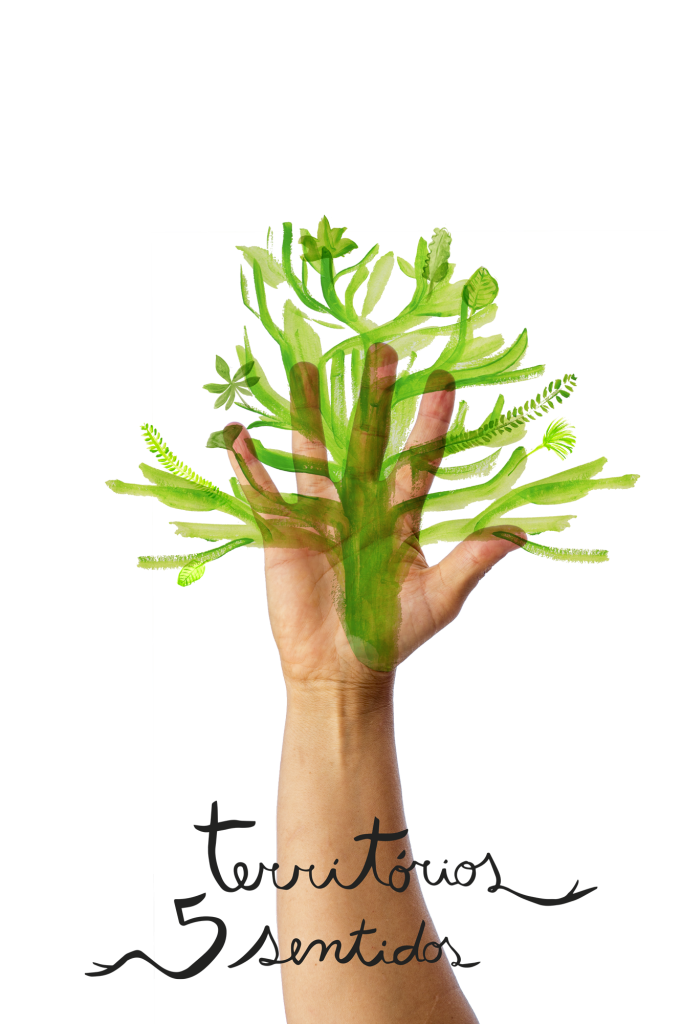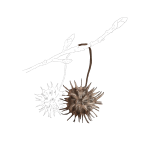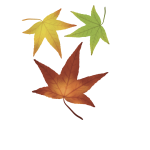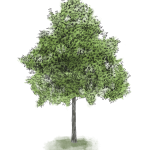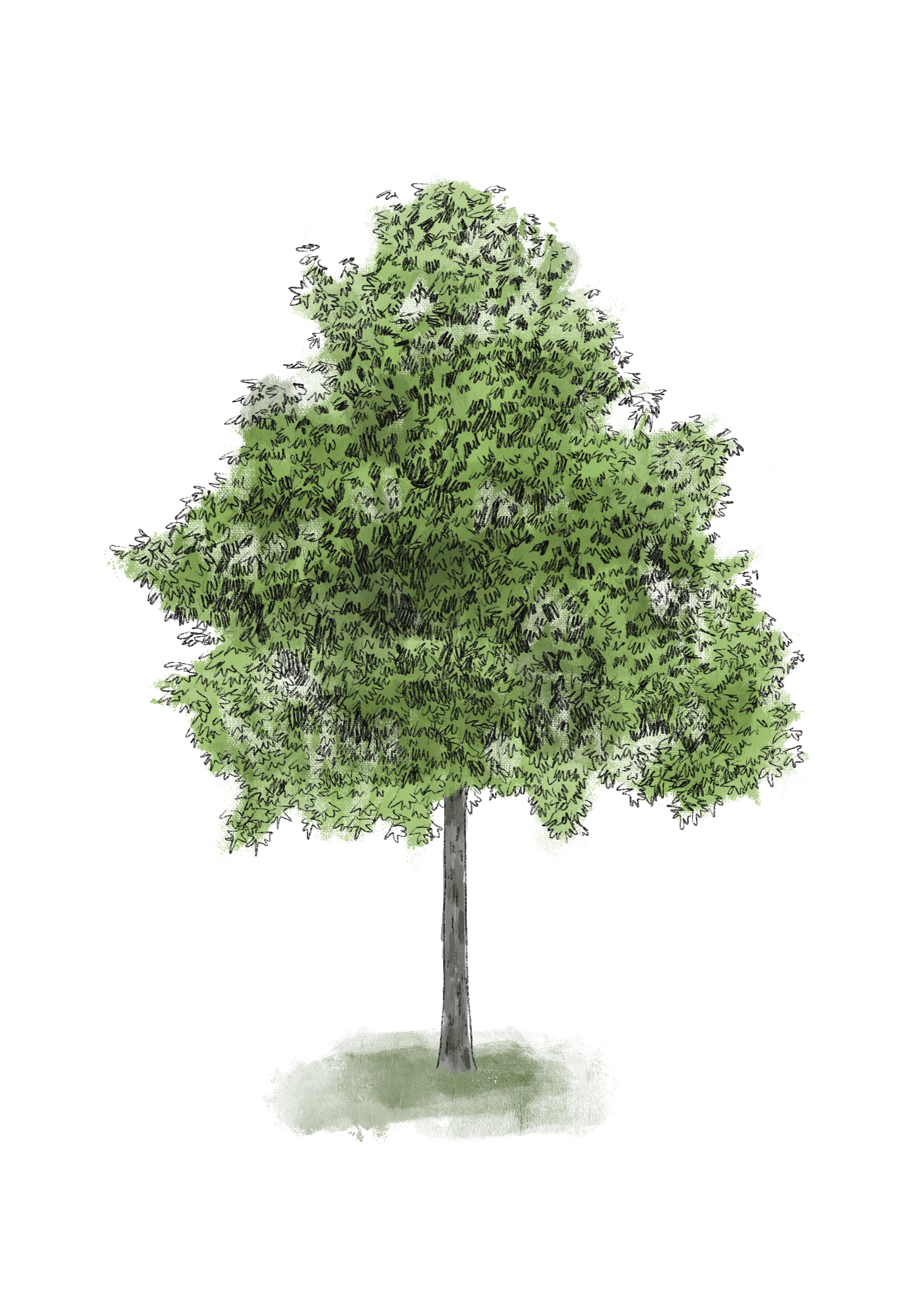

Sap Gum
Liquidambar styraciflua
Native to the mild temperate areas of eastern North America and the mountainous tropical areas of Mexico and Central America.
It is a tree with an oval silhouette, deciduous, often planted in public gardens for the beauty of its foliage colour in autumn; the young trees feature tall, conical crowns, while the mature trees have rounded, extensive crowns. Its trunk has reddish-brown and slightly cracked to scaly bark, becoming later greyish-brown and slightly wrinkled. It grows slowly initially, but faster after the age of three. It ranges in height from 15 to 45 metres and can get to an age of up to four hundred years.
The leaves are star-shaped with three to seven long, serrated lobes, bearing long petioles which are dark green, smooth, and shiny, turning to different shades of light green, yellow, orange, and red in autumn, often simultaneously. It is monoecious, bearing both male and female flowers on the same stem. In spring, green inflorescences emerge.
The fruits are globose, brown, covered by thorns, woody capsules when ripe. Its wood is of superior quality, with medium density and texture, dark in colour, and easy to work with.
It should be grown in full sun, preferably in sandy-clayey, neutral, moist soils, but with good drainage, for full root development; it can nevertheless grow in other types of soil. The plant’s need for water is considerable and it is important to irrigate in the first years after planting; once well settled, it is capable of enduring short periods of drought. It reproduces by layering and by seed.
The concentrated sap is a balsamic and fragrant gum used in the manufacture of perfumes, medicines, and toiletries. Its resin can be used to make bubble gum and its wood to make furniture and boxes.
The medicinal properties are attributed to the cinnamic and shikimic acid compounds; it is used in the form of syrups to treat dysentery, coughing, and sputum. For external use, it is used to treat skin conditions (scabies, wounds, and ulcers).
This plant, Liquidambar, was first named by Lineu in 1753 and means “liquid amber”; it is the combination of the Latin word liquidus (liquid) and the Arabic word amber, alluding to the fragrant terebinth juice or gum that exudes from the tree.
Liquidambar styraciflua is also known as American liquidambar. It was highly appreciated for its medicinal purposes by the Indians of North America and the Mayans of Central America. The Liquidambar Orientalis is native to south-western Turkey.
Video
Video Botanical Trail
Município de Castanheira de Pera
Sap Gum
